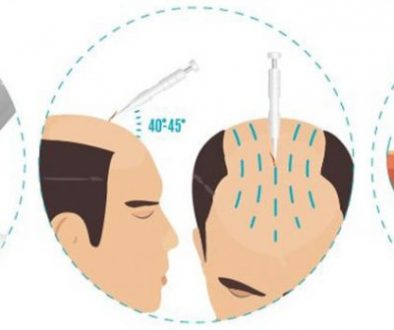Hair Shedding – Sign of Loss?
When I run my fingers through my hair, I sometimes notice that there are a few hairs in my hand. Am I losing my hair?
The shedding you are experiencing may or may not indicate hair loss.
Each hair follicle on one’s head goes through a growth cycle in 3 distinct phases.
 The Anagen Phase: This is known as the growing phase. This is where the hair is actively growing from it’s hair follicle. Typically, this phase lasts for several years without moving on to the catagen phase.
The Anagen Phase: This is known as the growing phase. This is where the hair is actively growing from it’s hair follicle. Typically, this phase lasts for several years without moving on to the catagen phase.
The Catagen Phase: This is known as the intermediate or resting phase. The hair follicle simply stops producing hair for a period of about 2-4 weeks as its getting ready to shed.
The Telogen Phase: This phase is known as the shedding phase. The old hair will shed with the onset of a new hair that is growing underneath the skin from the hair follicle. The new hair growing is in the Anagen phase, hence, the hair growth cycle repeats. For those who are considering or who have undergone a hair transplant, this is why the transplanted hairs will shed for 3-5 months before growing again. Typically however, hair will start to regrow (enter anagen) shortly after the hair sheds (telogen).
It is normal to shed between 50-100 hairs a day as hair follicles go through the above listed cycles.
Whereas the above hair growth cycle is normal, here are a few signs that you may be losing hair
- Extensive Shedding: Seeing more than 50-100 hairs a day could be an indication that you are losing your hair. Note: certain medications (especially hair loss medications like Propecia and Rogaine) also may cause this and may not be an absolute sign of hair loss.
- Change in Hair Appearance: If your hairline is receeding or you notice areas of thinning hair, this may be a sign of hair loss.
For those who are experiencing Androgenetic Alopecia (hereditary hair loss), the hair growth cycle for those hairs that are genetically predisposed to DHT (the hormone responsible for hair loss) speeds up, lessening the time of the Anagen phase (growth phase). These genetically predisposed hairs will continue to grow for awhile, but after each cycle, will appear smaller, thinner, and contain less pigment – until eventually it no longer appears – hence the loss of hair.
Bill Seemiller
Associate Publisher
Technorati Tags: hair loss, hair follicle, Anagen, Catagen, Telogen, hair growth cycle, hair transplant, losing hair, Propecia, Rogaine, thinning hair, Androgenetic Alopecia, hereditary hair loss, DHT, loss of hair



